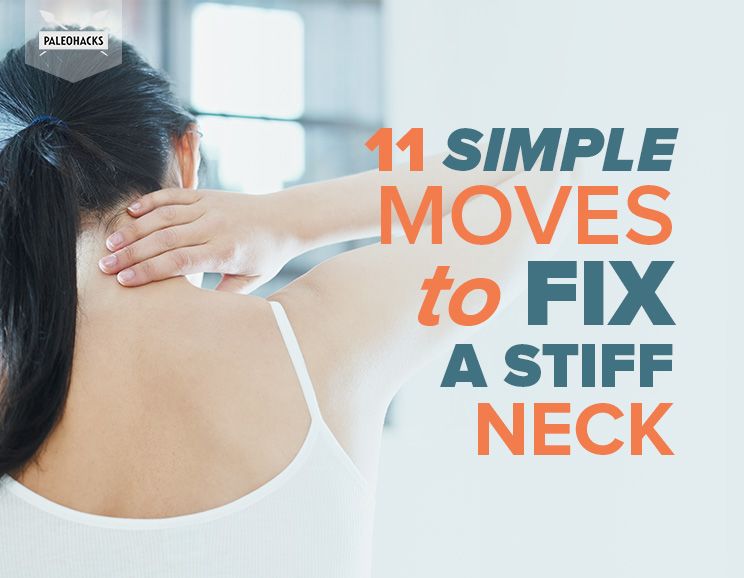
How many of you have dealt with a stiff neck over the last year?
How about the last five years? If any of you answered “yes” to the above questions, then this article is for you.
There are many reasons why a neck gets stiff. As I introduced in the shoulder mobility article, with the amount of sitting, driving, and texting we do on a daily basis, our posture begins to suffer.
Combine this bad posture with an active lifestyle, and we are now putting strength on top of a dysfunctional position. Over time, this can put undue stress on the neck and cause stiffness.
When our body perceives pain or a threat, it wants to protect. Unfortunately, one of the ways our body protects is by stiffening up.
Many of the mobility exercises I mentioned in the shoulder article can help tremendously with a stiff neck. However, sometimes the obvious areas of stiffness are being caused by less talked about reasons. Below I discuss what you may not have tried yet.
1. First Rib Dysfunction
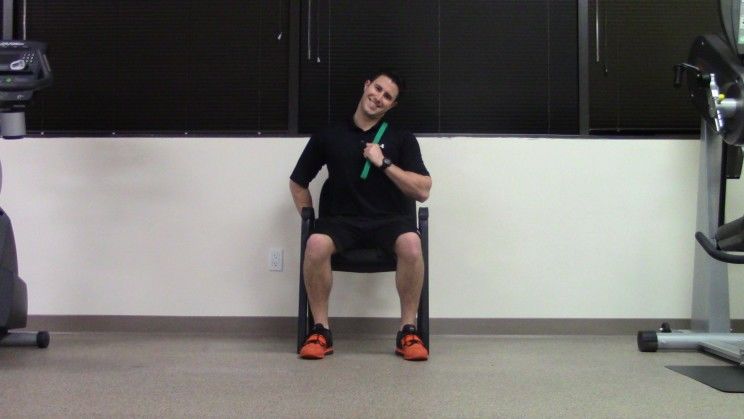
The first rib is a more common cause of shoulder and neck pain than most people realize.
However, a subtle first rib elevation can cause neck stiffness, as well. What happens is that anatomically, the anterior and middle scalene muscles connect to the first rib. These two small muscles located at the front and side of the neck act to elevate the first rib and also assist with breathing.
Over time, with excessive sitting, driving, texting, or computer work, our heads tend to dip forward. This puts these scalene muscles into a shortened position, causing them to tighten up. Because they function to elevate the first rib, when they are shortened, our first rib stays elevated. Therefore, one of the causes of a stiff neck can be from our first rib.
How To Fix It:
To get those scalene muscles on your neck to relax, sit in a good postural position. Using a towel or belt, place it over your shoulder close to — but not on — your neck. Reach behind with your other hand to hold the belt/towel.
Now side-bend your head towards the rib you are depressing with the belt/towel.
2. Diaphragmatic Breathing
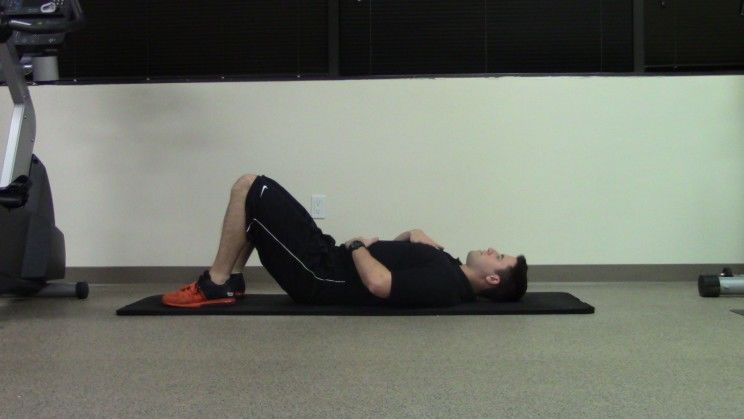
I know what you’re thinking: How does my breathing affect my neck? I am going to show you how.
Before you read any further, put one hand on your chest and the other on your abdominal wall. Now take a deep breath in.
Which hand(s) rose first or more? If you’re saying your chest did all or most of the work and your stomach did less of the rising, then you have a poor breathing pattern.
Now do that again. You should notice that when you breathe in through your stomach, your shoulders don’t rise, but that when you breathe in through your chest, your shoulders rise.
Remember how I said the scalenes assist with breathing? Imagine if you are breathing through your chest each time all day long. Those scalenes are constantly getting overworked!
Furthermore, all those neck and shoulder muscles are stiffening up from rising each time you breathe.
How To Fix It:
To practice diaphragmatic breathing, lie down and put one hand on your chest and one hand on your stomach. Breathe in through your nose and allow your stomach to rise, minimizing the amount of chest rising. Breathe out through your mouth.
Perform 10-20 reps for 2 sets.
3. Chin Tuck
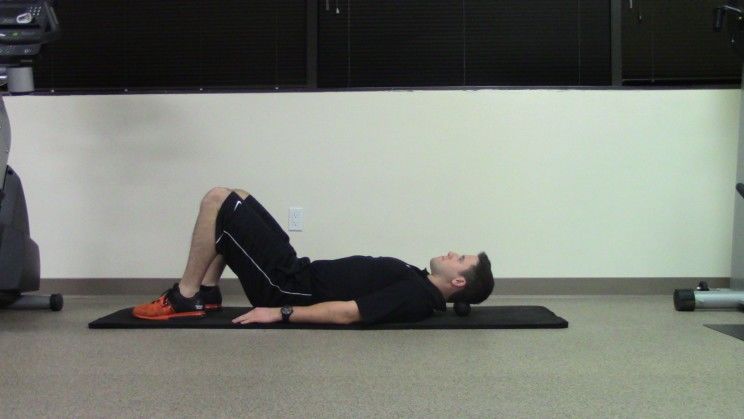
Sometimes those deep neck flexor muscles get stiff from being in a forward head position (crouching over your computer screen, desk, etc.) all day long.
How To Fix It:
To bring them back into a neutral position, lie down on your back. You want to keep your mouth closed and think about pushing your head straight back. Avoid the tendency to flex your neck down towards your chest.
You may feel a stretch down the middle of your back.
Perform 10-15 reps slowly for 2 sets.
4-7. Neck Range of Motion
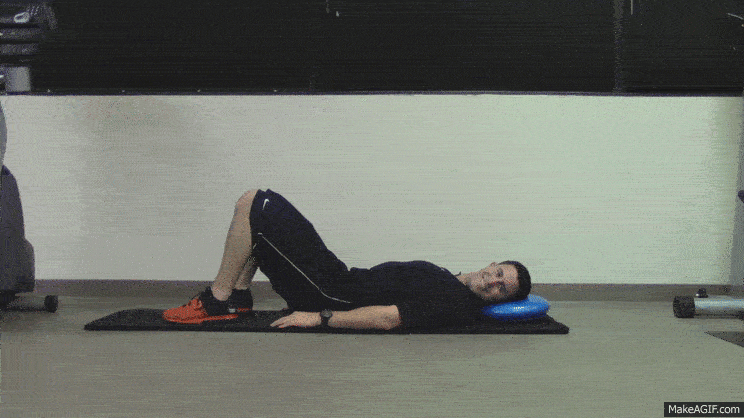
If you’ve ever woken up with a stiff neck to find that even the slightest range of motion feels painful, this was most likely caused by sleeping in a position that strained the neck muscles during the night.
How To Fix It:
Take a deflated beach ball and place it under your head. Placing this under your head will allow you to keep a neutral position.
Next, rotate your head side to side, slowly. Work through 10-20 reps per side.
After that, work up and down, again working through 10-20 reps. Be sure not to work through any pain and to make the movements slow and controlled.
Perform 10-20 reps per side for 2 sets.
8. Thoracic Extension
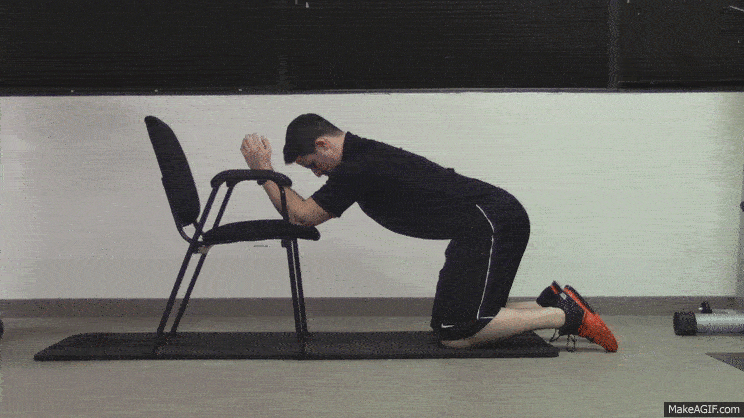
Often times, a stiff neck can come from poor shoulder and thoracic spine mobility.
When we begin to develop a poor posture, our thoracic spines begin to become kyphotic. This mobility exercise can help balance out all the flexing we do throughout the day when we are sitting and driving.
How To Fix It:
Place your elbows on a chair or table in a kneeling position. Keeping your core engaged and your neck in a neutral position, rock your hips back towards your feet.
You may feel a little stretch in the middle of your back.
Perform 10-20 reps for 2 sets.
9. Seated Towel Mobilizations with Movement
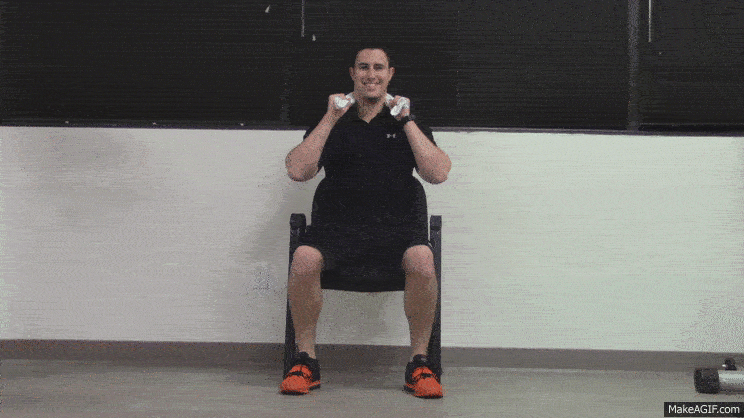
This is a great at-home technique that can be used for different segments of the cervical spine. It is called a Mulligan technique.
How To Fix It:
Use a towel behind your neck to start. Holding onto the towel, begin to rotate your head by letting your arms help assist the movement.
Do not pull on your neck, but instead allow assistance from your arms.
Perform 10-15 reps in each direction for 1 set.
10. Neck Circles
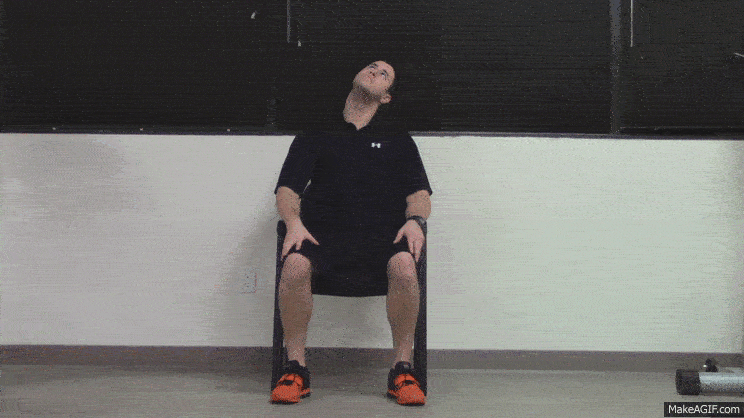
Neck circles can be a good tool to use for getting blood flow and motion in your neck. Often times we sit for hours on end without moving, causing our necks to stiffen.
How To Fix It:
Simply going through neck circles in clockwise and counterclockwise directions can be useful. Perform five clockwise and counterclockwise circles.
Perform 5 clockwise and 5 counterclockwise circles for 2 sets.
11. Upper Trap Stretch
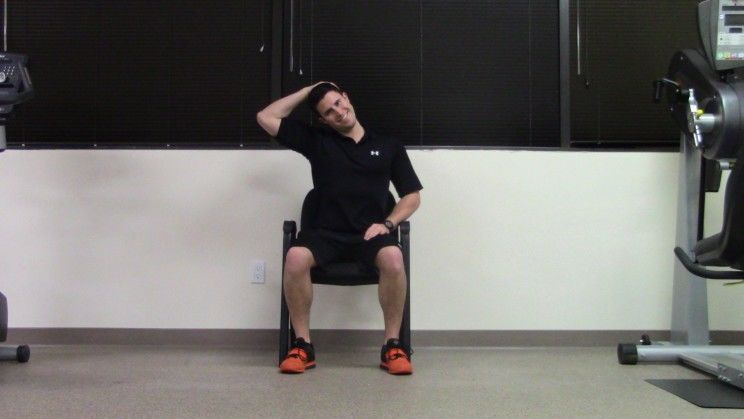
Stretching the upper traps can be a quick way to begin relieving neck stiffness from a sports injury, excessive slouching or any activity that repeatedly requires you to turn your head to the side.
How To Fix It:
Be sure to be nice and gentle with this stretch. Place hand on the side of your head and gently pull the opposite ear towards the opposite shoulder.
Hold for 45 seconds for 2 sets.
Neck stiffness can be caused by many reasons. Before beginning any exercise program, always consult with your doctor first. If you have chronic pain or stiffness, get evaluated by a physical therapist.






Комментариев нет:
Отправить комментарий